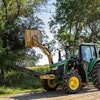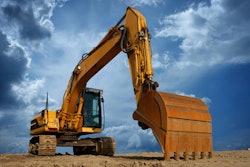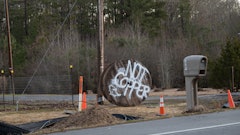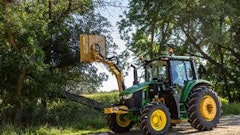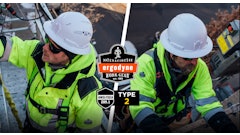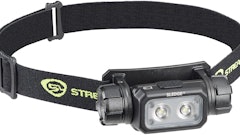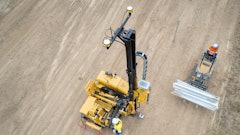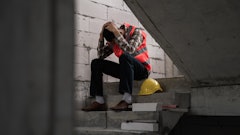
Approximately 30 years ago, the California Supreme Court held in the case of Privette v. Superior Court (1993), that a homeowner should not be liable for the injuries incurred by the employees of independent contractors retained to repair the homeowner’s property. The original rationale is that a relatively unsophisticated property owner such as Mr. Privette should not be responsible for determining the relative degree of risk presented by the task at hand or the safety of the means and methods used by contractor employer in fulfilling the job. Secondarily, the Privette court noted that the injured employees of independent contractors had workers compensation benefits available to them to address on the job injuries.
With regard to the specific factual scenario outlined in Privette, the worker in question was injured when he fell from a ladder carrying hot tar up to a roof. The court reasoned that the homeowner neither required the worker to carry an open bucket of tar nor did he have any knowledge that was the procedure adopted by the employee’s foreman. In fact, the homeowner was not even present at the time of the injury.
In the intervening years, the Privette Doctrine, as it became known, has both broadened in scope and evolved. The availability of workers’ compensation coverage is no longer a factor to be considered, Tverberg v. Fillner Construction Inc (2010), nor does it matter that the hirer is a general contractor as opposed to a homeowner. Lopez v. University Partners (1997). Rather the emphasis now has changed to one of delegation. Sandoval v. Qualcomm (2021). Under certain factual scenarios that trigger the imposition of the doctrine, the hirer of an independent contractor can completely delegate responsibility for jobsite safety concerning the contractor’s employees. That stands, even in the face of competing Cal/OSHA regulations, which have not been complied with and normally non-delegable duties, which attach to property owners, via Seabright Insurance Company v. US Airways Inc (2011).
In fact, recent courts have referred to the “Privette presumption,” holding specifically that there is a strong presumption that the hirer has delegated all workplace safety related to the independent contractor’s scope of work, via McCullar v. SMC Contracting (2022). Once the defendant establishes the factual foundation that it hired an independent contractor to perform work and the independent contractor was injured during the job, the burden shifts to the Plaintiff to raise a triable issue of fact as to whether either of the two exceptions to Privette – concealed hazard or retained control –applies, via Miller v. Roseville Lodge No 1293 (2022). If the Plaintiff cannot do so, the court will find that there is no duty owed by the hirer to the contractor’s employees and the defendant will prevail as a matter of law, according to Gonzalez v. Mathis (2021).
Therefore, since the factual scenario that triggers the application of Privette is a broad one (i.e., an injury to the employee of an independent contractor in the scope of work), the analysis really begins by reviewing whether either of the exceptions apply.
Retained Control
Often called the Hooker exception from the case which originally described it, Hooker v. Department of Transportation (2002), this exception requires a finding that the hirer’s exercise of retained control over a jobsite affirmatively contributed to the claimant’s injuries.
In the Hooker matter, the decedent was killed when his crane became unstable and tipped over after he pulled in his outriggers to accommodate traffic allowed by hirer CalTrans through the jobsite. Plaintiffs asserted that, in allowing traffic at the same time while being aware that the outriggers could not be deployed because of space, CalTrans negligently exercised the control it retained over the safety of the jobsite. The Hooker court disagreed noted that, while Caltrans permitted vehicles to use the jobsite overpass at the same time the crane was being operated, it did not direct the crane operator to retract his outriggers to permit traffic to pass. Moreover, it did not matter that CalTrans was aware that the crane operator retracted his outriggers and that the practice was unsafe. Merely being passively aware of an unsafe practice did not make the hirer liable for injuries which resulted from that practice.
Generally, in reviewing whether a hirer retained control, courts look to whether there is control over the means and manner of the claimant’s work. Millard v. Biosources, Inc (2007). Typically, a general contractor will be deemed to not have retained control when the subcontractor’s employee uses the employer’s tools, is directed by the employer’s supervisor, and is not supervised by the general contractor as to the means and methods of the work. Padilla v. Pomona College (2008). Even in the face of an obvious safety issue such as a missing railing to a raised platform, the general contractor will not be held responsible unless the general contractor either removed the railing or promised to install it and did not. Madden v. Summit View (2008).
Moreover, the analysis turns on not whether that there was an awareness of a problem on the part of the general contractor but whether the Plaintiff employee and/or the Plaintiff’s employer had enough freedom of action to control the safety conditions related to their scope of work. In the case of Delgadillo v. Television Center (2018), the hiring property owner was determined to have no duty to provide an adequate anchor bolt attachment for a window washer when the owner made no assurance about the anchor bolts. The court reasoned that the owner delegated the safe workplace requirements to the employer and the passive provision of an unsafe workplace –even one that is in violation of Cal/OSHA regulations –is not actionable under Privette.
Similarly, in the case of Horne v. Ahern Rentals (2020), the court determined that the hirer of an independent contractor is not liable when the contractor’s employee performs the task unsafely even when the hirer is aware of the danger as it occurs. In the Horne case, the independent contractor was changing tires on a forklift owned by the hirer and kept at the hirer’s premises. The employee voluntarily went under the forklift supported on jacks without taking adequate safety precautions, which the hirer’s supervisor later testified that he witnessed and felt was unsafe. However, the supervisor took no steps to stop the work before the forklift collapsed onto the employee, killing him. The court found that this was not actionable against the hirer since passively permitting an unsafe condition was not the same as actively contributing to the manner in which the job was performed.
However, provision of inadequate or unsafe equipment or safety gear is actionable and constitutes an exception under Privette. In the case of McKown v. WalMart (2002), WalMart required its third-party contractors to use WalMart equipment and, in the case of the Plaintiff, who was a contractor installing sound systems in the ceiling of a WalMart property, there was a suggestion (which the court interpreted as a directive) for the Plaintiff to use a forklift with a missing chain securing an extended platform. During Plaintiff’s use of the equipment, the one remaining chain broke and Plaintiff fell 15 feet to the ground and was severely injured. Defendant WalMart, by requiring the Plaintiff to use defective equipment which it knew or should have noted was missing a chain, was determined to be actively negligent in a manner which injured the Plaintiff and therefore it could not invoke Privette.
It should also be noted that later cases have made a distinction between merely allowing a contractor to use defective equipment and directing a contractor that such equipment must be used. In the case of Miller v. Roseville Lodge No 1293 (2022), the plaintiff asked to use a mobile scaffold on the hirer’s premises when he forgot to bring a ladder. During the use of the scaffold, a wheel became unlocked causing the Plaintiff to fall. The Miller court found that merely permitting the use of equipment is not the same as providing it and is merely passive and non-actionable negligence under Privette.
In summary, with respect to the issue of retained control, liability is only triggered when the hirer reserves for itself a sufficient degree of authority over the performance of the work that the contractor is not free to do the work in its own manner and the hirer actually induces the injury causing event. McCullar v. SMC Contracting (2022). For example, simply directing a subcontractor to “get the job done” when safety concerns are raised is not active negligence on the part of the general contractor since the subcontractor still retained the ability to assess safety on its own. McCullar v. SMC Contracting (2022). In general, the hirer has no obligations regarding the independent contractor’s employees and the mere failure to exercise the power to compel certain safety measures as part of overall supervision is not grounds for liability. Kinney v. CSB Construction (2001).
Concealed Hazard
The second exception to Privette occurs when the claimant encounters a concealed hazard which is directly responsible for the injury. This exception was originally raised in the case of Kinsman v. Unocal Corp (2005). The Plaintiff was a carpenter at an oil refinery owned by the defendant who asserted that he was exposed to asbestos while performing work as an employee of an independent contractor. The Defendant argued that it did not direct the Plaintiff’s work and had no control of the means and manner of the work. While that was both true and undisputed, the court found that the hiring landowner knew or should have known of a latent or concealed preexisting hazardous condition of the property that the contractor did not know, nor could he have reasonably discovered. Essentially, in the case of a concealed hazard, the hirer retained liability as a landowner for its own negligence separate and apart from the retention of the Plaintiff as an independent contractor.
Later cases have distinguished hazards which are known by both the hirer and the contractor, and which were voluntarily encountered by the contractor. In the case of Gonzalez v. Mathis (2021), Plaintiff was retained to clean the Defendant’s skylight on a regular basis. Between the time of the initial retention and the accident, Defendant erected a parapet wall around his roof for the aesthetic purpose of hiding the heating and air conditioning equipment. The Plaintiff complained that the access to the skylight was reduced to a narrow path that was slippery with no tie off points. Nevertheless, Plaintiff continued to service the skylight even in the face of the known danger. When Plaintiff slipped and fell off the roof, the Gonzalez court determined that there was no liability as to the owner even for a known hazard created by the owner because of the strong presumption of delegation under Privette. Essentially the court found that the contractor appreciated the hazard and was free to walk away from the job. When he failed to do so, he became responsible for his own safety and dealing with this known hazard.
Similarly, in the case of McCullar v. SMC Contracting (2022), the court held that a general contractor can create the hazard which caused the injury but there is no liability if the claimant acknowledged the dangerous condition and retained the freedom to accommodate and avoid it. In the McCullar case, the general contractor ran heaters in a building under construction for the purpose of drying a fireproofing coating. The heaters caused snow to melt and drip onto the floor which then froze into ice when the heaters were turned off. The subcontractor repeatedly complained about the ice to the general contractor which took no action. The subcontractor then was injured when the ladder he was using slipped. The McCullar court ruled that the claimant was barred by Privette as the safety of his scope of work was delegated to him and he retained the freedom either to correct the condition or to work around it or refuse to work until it was corrected.
The most recent cases hold that a concealed condition must in fact be concealed–that the claimant not only does not know of nor can reasonably discover the hazard. Acknowledging the condition–even one created by the hirer–defeats the injured party’s claim as the hired contractor still retains the responsibility for assessing whether its workers can perform their work safely. Gonzalez v. Mathis (2021).
Trends in Privette
Based on the recent decisions in the cases of Horne v. Ahern Rentals (2020); Sandoval v. Qualcomm (2021); Gonzalez v. Mathis (2021); McCullar v. SMC Contracting (2022) and Miller v. Roseville Lodge No 1293 (2022), the trend has been to broaden the reach of Privette and to narrowly construe the types of actions which fall within the exceptions of retained control and concealed hazards. In the last three years, the courts have decided that passively permitting an unsafe condition even while witnessing it and appreciating the danger is not actionable (Horne); that having authority but failing to exercise it is not actionable (Sandoval); that not addressing a dangerous condition which may have been created by the owner and general contractor is not actionable as long as it is not concealed, and the subcontractor retains the freedom to accommodate it (McCullar and Gonzalez) and that permitting a subcontractor to use defective equipment is not the same as directing them to do so and therefore is not actionable. (Miller).
The current emphasis on delegation, and particularly the strong presumption that the hirer has delegated all workplace safety related to the independent contractor’s scope of work, makes Privette a very effective argument on behalf of property owners and general contractors. Based on current trends, there is no reason to believe that this will not continue in the foreseeable future.


